Cooktown is a small town and locality in the Shire of
Cook, Queensland, Australia.
Cooktown is located about 2,000 kilometres North of
Brisbane and 328 kilometres North of
Cairns, by road.
Cooktown is at the mouth of the Endeavour River, on
Cape York Peninsula in Far North Queensland where James
Cook beached his ship, the Endeavour, for repairs in 1770. Both the town and
Mount Cook which rises up behind the town were named after James
Cook.
Cooktown is one of the few large towns in the
Cape York Peninsula and was founded on 25 October 1873 as a supply port for the goldfields along the Palmer River. It was called '
Cook's Town' until 1 June 1874.
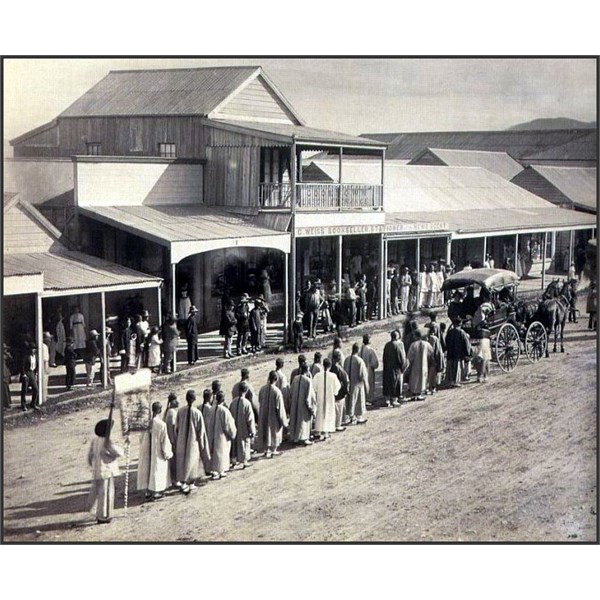
A visit of Chinese Commissioners to Cooktown in 1887

Range of shops operating in Cooktown 1880
The port of
Cooktown served the nearby goldfields and, during the goldrush of the 1870s, a Chinese community many thousands strong grew up in the goldfields and in the town itself. The Chinese played an important role in the early days of
Cooktown. They came originally as prospectors, but many established market gardens, supplying the town and the goldfields with fruit, vegetables and rice, while others opened shops.
However, largely through cultural misunderstandings, conflict broke out between the Aboriginal people and the new settlers, and the diggers. The
Cooktown Herald, 8th December 1875, reported: "The natives wholly ignorant of the terrible firepower of fire-arms, and confiding in their numbers, showed a ferocity and daring wholly unexpected and unsurpassed. Grasping the very muzzles of the rifles they attempted to wrest them from the hands of the whites, standing to be shot down, rather than yield an inch...." It was an unequal struggle. Whole tribes were wiped out as
European settlement spread over
Cape York Peninsula.
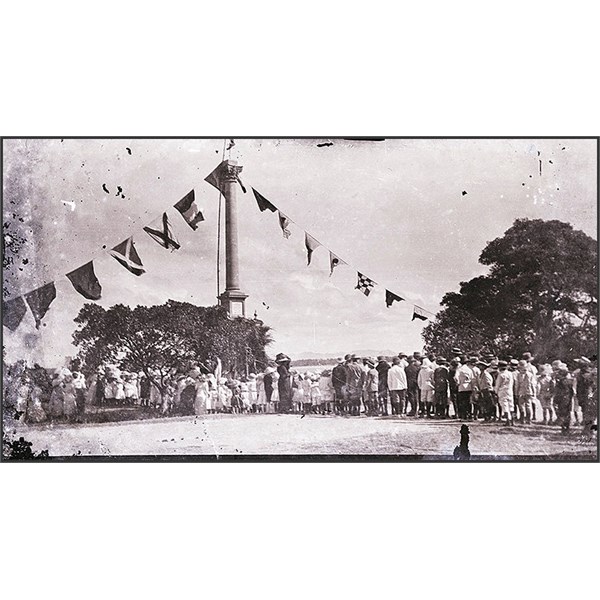
1917 celebrations of Cook's landing

Cooktown, celebrating Federation on 1 January 1901

Cooktown Post Office and residence, 1940's
Transport was an ongoing problem for the new settlers. Getting supplies and people to the goldfields often took three weeks. After every wet season the tracks and bridges had to be remade. A railway line from
Cooktown to
Maytown, was planned, but it took five years to get the 67
miles (108 km) to
Laura – and that is where it stopped. By that time the gold was petering out, so the Queensland Government refused further funding for the venture.
In spite of this, the train proved to be a lifeline for the Peninsula people connecting the hinterland to
Cooktown, from where one could catch a boat to
Cairns and other southern ports. The line was closed in 1961 after the Peninsula Development Road was built connecting
Cooktown and other Peninsula communities with
Cairns and the
Atherton Tableland to the south.
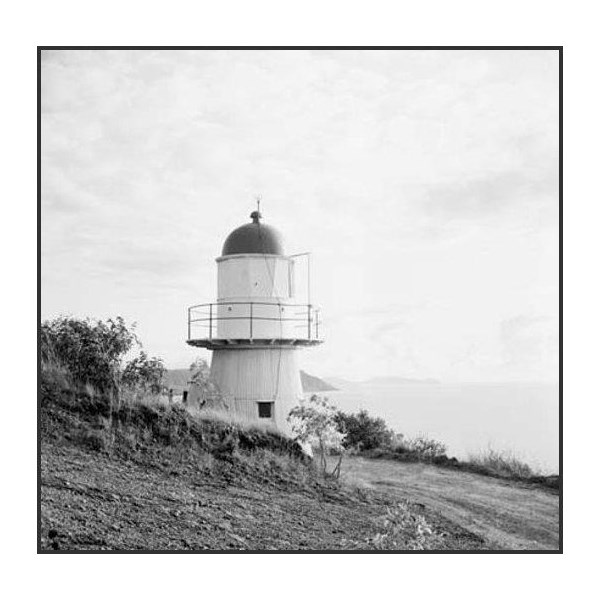
Lighthouse on Grassy Hill near Cooktown 1963
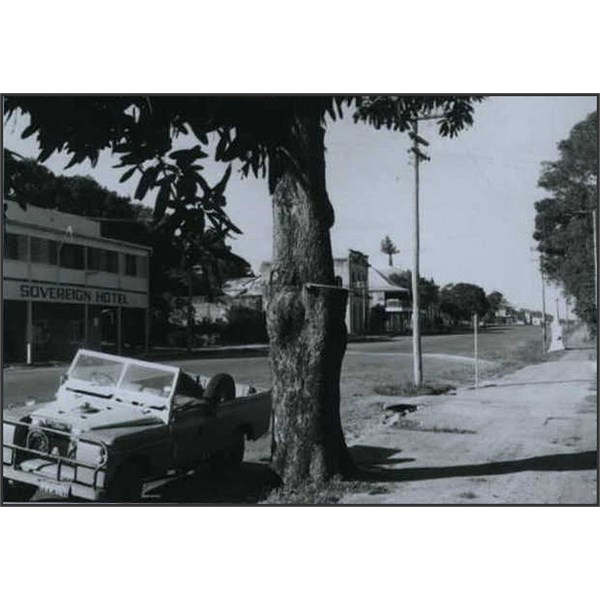
Main street of Cooktown from front of PO 1969
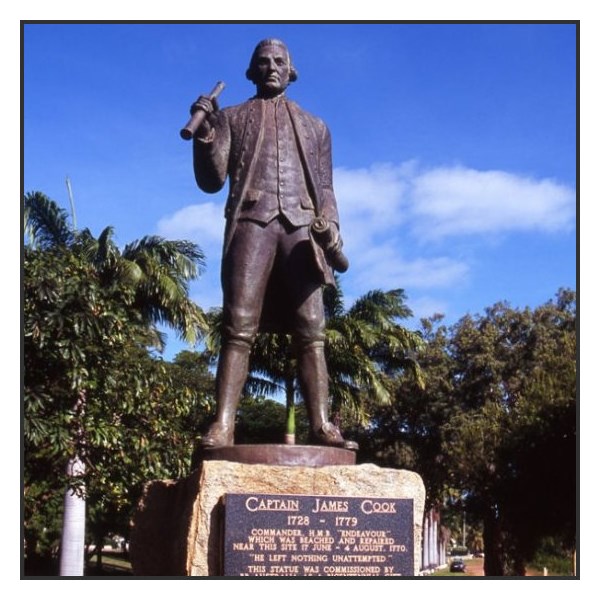
James Cook Monument at Cooktown
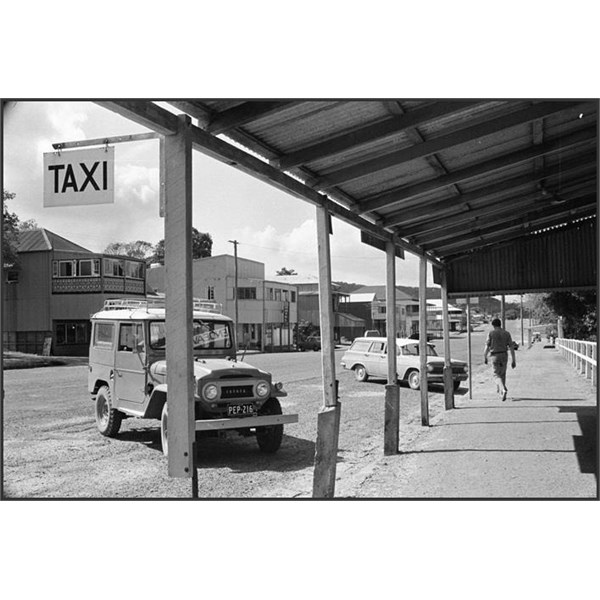
Main street of Cooktown, 1970
's magnificent Botanic Garden was established near the town in 1878. Much work was done in the early stages – with wells sunk,
water reticulated, garden beds enclosed, stone-lined paths, stone-pitched pools and footbridges made, and lawns, trees and shrubs planted.
Although
the gardens fell into disrepair, in recent years they have been expanded and are a popular destination for botanists and nature lovers. Most of the early stonework has been restored, and beautiful
walking tracks lead the visitor through the Botanic Garden to the magnificent beaches at
Finch Bay and Cherry Tree Bay.
In 1881, a bridge over the Endeavour River was completed, which opened up the richer pastoral lands of the Endeavour and McIvor River valleys. Tin was found in the Annan River area, south of
Cooktown, in 1884.
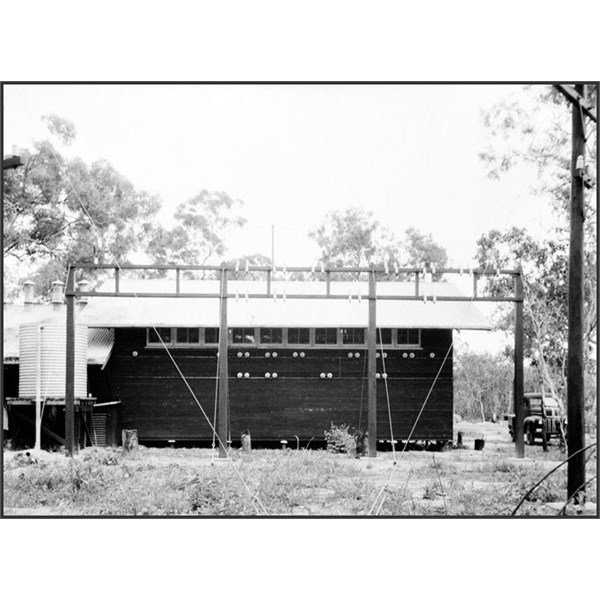
Cooktown, RAAF, transmitter Building

Cooktown Hospital built in 1880, replaced in 1976. This photo 1940

Model of Cooks ship the Endeavour in the Museum at Cooktown 1970
By 1940, little evidence of
Cooktown or
Maytown's interesting past remained. During the Second World War,
Cooktown became an important base for the war effort. The civilian
population of
Cooktown was encouraged to evacuate in face of the Japanese advances and by 1942 the vast majority had left. The Aboriginal people of the Lutheran missions at
Hope Vale and Bloomfield were forcibly removed - most being taken south to Woorabinda in May, 1942, while some of the elderly people were sent to Palm Island. The senior missionary, Pastor Schwartz (known as Muni to the local people), was arrested and placed in internment as he were suspected as being an enemy sympathiser. The Aboriginal people were not allowed to return to their homelands until 1949,
well after the end of the war. Many Aboriginal people died when moved from their traditional lands, and many Aboriginal and white families never returned from their exile.
Some 20,000 Australian and American troops were stationed in and around the town. The busy airfield played a key role in the crucial Battle of the Coral Sea when Japanese expansion towards the Australian mainland was finally halted. The last military unit, the 27th Operational Base Squadron of the RAAF, ceased operations in
Cooktown in April 1946.
1949, another cyclone devastated the town, and
Cooktown's
population declined further. With the closure of the rail link to
Laura in 1961 and the "Peninsula Development Road" opened up to the south, the
population declined to just a few hundred people before it gradually began to climb again.
The "Milbi Wall" (or "Story Wall") marks the place of the first encounter between the British seafarers and the local Aborigines. The Milbi ('Story') Wall tells the story of
Cooktown and the Endeavour River from the perspective of the Aboriginal people in tiles.

Cooktown Milbi Wall
has recently grown in importance again and become a popular tourist destination. The paving of the Mulligan Highway now provides all-weather access by road for the first time. There are two flights a day connecting
Cooktown with
Cairns. The town now has good communications, more
services, better roads, and offers residents a relaxed and healthy lifestyle.
.